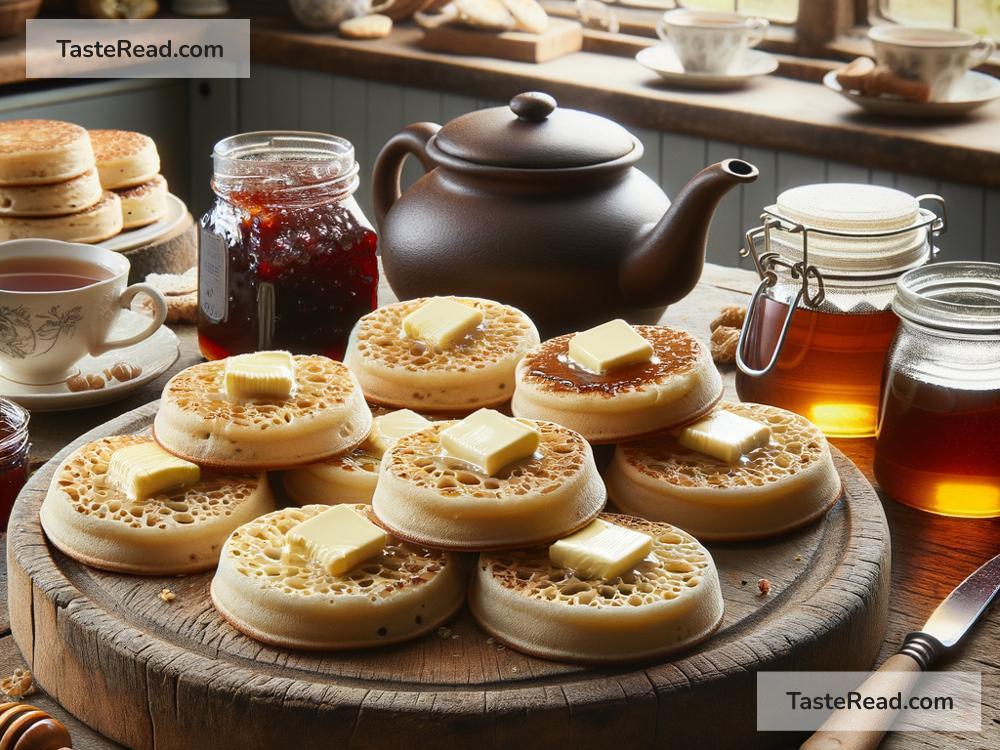The Evolution of the British Crumpet: A Delectable Journey Through Time
The crumpet, a humble yet beloved food, has been a cornerstone of British teatime for centuries. Its golden, spongy texture and rich, buttery flavor make it a favorite of households across the UK. But how did this iconic snack come to be, and how has it evolved over time? Let’s take a journey through history to explore the fascinating evolution of the British crumpet.
Where It All Began
The origin of the crumpet dates back hundreds of years. Early versions were made in medieval times, but they looked and tasted quite different from the crumpets we eat today. Before baking powder came into common use, crumpets were made with yeast-based batters. These early crumpets were heavy and pancake-like, with a thicker texture than the light and airy treats we associate with modern crumpets.
The name “crumpet” itself likely comes from the Middle English word “crompid,” meaning curved or bent. Some food historians believe this reflects the crumpet’s round shape. Others think it might be related to the Old English word “crumb,” which refers to something small or delicate—just like a crumpet.
The Industrial Revolution: A Key Turning Point
In the 18th and 19th centuries, Britain underwent significant changes during the Industrial Revolution. This period marked a boom in food innovation, and crumpets were no exception. Around the 19th century, cooks began using baking powder instead of yeast, which helped transform crumpets into lighter, fluffier creations. This innovation also resulted in the characteristic holes on the surface of the crumpet, which form as air escapes during cooking. These holes are key to the crumpet’s charm—they allow butter and spreads to seep into every bite, making it all the more delicious.
During this time, crumpets started to morph from their earlier, pancake-like versions into something closer to what we recognize today. They became widespread in homes, tea rooms, and bakeries across Britain, gaining popularity as a teatime treat.
Crumpets vs. English Muffins: Clearing the Confusion
For many people outside Britain, the crumpet is often confused with the English muffin. While they are both round and cooked on a griddle, these two foods are entirely different.
Crumpets are made from a loose batter rather than a dough, which gives them their delicate, spongy texture. This batter is poured directly onto a hot griddle or into crumpet rings (metal molds that help hold their shape). The resulting texture is soft and porous, ideal for soaking up butter. In contrast, English muffins are made from dough, giving them a firmer texture. They are also split before toasting, unlike crumpets, which are served whole.
In short, crumpets are the softer, fluffier cousin of the English muffin. They’re tailor-made for indulgent spreads like jam, honey, or cheese.
Modern-Day Crumpets: A British Staple
Today, crumpets are as popular as ever. Whether served as a quick snack or a teatime treat, they remain a quintessential part of British life. Supermarkets now sell pre-packaged crumpets, making it easy for anyone to enjoy this delightful food at home. However, many people still appreciate the tradition of homemade crumpets, especially for their freshness and flavor.
The timelessness of crumpets lies in their versatility. For a classic taste, butter is often the go-to topping. But crumpets can be dressed up in countless ways—sweet options like jam, marmalade, or Nutella are popular, while savory toppings such as cheese, smoked salmon, or even poached eggs give crumpets a modern twist.
Regional and International Influence
While crumpets are a distinctly British invention, they have found an audience in other parts of the world, including Australia and New Zealand, where they’ve become a popular breakfast option. In recent years, chefs and bakers have experimented with crumpets in creative ways, such as artisanal variations made with sourdough or gluten-free alternatives to cater to diverse dietary needs.
Regional differences within Britain also add flair to the crumpet story. In some areas, “pikelets” are a thinner, flatter version of crumpets, often served without crumpet rings. Though similar in flavor, pikelets have a unique texture and are popular in certain parts of Wales and the Midlands.
Why We Love Crumpets
At its heart, the crumpet represents comfort and simplicity. Its ability to soak up butter and warm our hearts has kept it a staple for generations. Whether you fancy a quiet afternoon tea by the fire or a quick bite before heading off to work, the crumpet is always ready to delight.
It’s no wonder this spongy snack has stood the test of time—it’s adaptable, timeless, and undeniably delicious. From its humble beginnings as a yeast-based pancake to the light, modern crumpet we love today, this British icon has proved its staying power.
So, next time you bite into a warm crumpet slathered with butter, take a moment to savor its rich history and evolution. After all, you’re not just enjoying a snack—you’re indulging in a piece of Britain’s culinary heritage.


